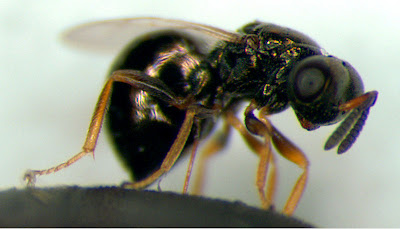By Tricia Horvath
For decades scientists have been debating what makes a person who they are. Is someone’s personality, appearance, and medical history determined by their nature (their hardwired genes with the environment playing no role) or nurturing (how they were raised, and what they encountered in their environment growing up)? Many scientists were convinced that only one of these things, nature or nurture, could be responsible for determining a person’s fate. For instance, those who believed in nurture as the prevailing force thought that a person’s specific genes had nothing to do with how they behaved. Although ample evidence has been built up on both sides, scientists now know that the answer is actually both!
If you need convincing, just think about identical twins. Identical twins are genetic clones (all of their genes are exactly the same). These twins are very similar to each other in many ways such as physical appearance and personalities, even if they are separated at birth and raised apart from one another. However, anyone who has spent significant time with identical twins knows that each twin is their own person, and as they get older and spend less time together the personalities of the twins will continue to diverge. If nature (just genes) was in charge, identical twins would be the same in every respect. If nurture (just environment) was in charge, identical twins would be no more similar than any pair of siblings.
 |
Genes are like pages in an
instruction manual for ourselves.
If genes are the pages in our
instruction manual, then DNA
is the actual book. Image by
tungphoto at freedigitalfotos.net. |
So how is any of this possible? The answer lies in a field called epigenetics. Epigenetics studies how the environment interacts with genes to change their expression. Genes are like pages in an instruction manual for ourselves. In order for certain traits to be expressed, these genes/pages need to be read. If a gene cannot be read, then the trait it represents will not be expressed.
The environment plays a large role in determining which genes can be read, and therefore what traits are expressed. However, if a person does not have the genes for a specific trait (their book does not have those pages) that trait could never be expressed. For example, no matter how much time you spend in the water growing up, you will never grow a mermaid tail because you don’t have the genes for a mermaid tail. In this example, spending a lot of time in the water growing up would be part of your nurturing, and the lack of genes for a mermaid tail would be part of your nature. Even though having a mermaid tail would be beneficial in the water, the environment cannot interact with your genes to give you a mermaid tail because you simply don’t have the genes. Therefore epigenetics only works if you have the right genes.
How does epigenetics work?
DNA is the long strings of genetic material that are found in every cell (and every cell has exactly the same DNA). Genes are strung together on the DNA strings: If genes are the pages in our instruction manual, then DNA is the actual book. Each gene has a section with “read” or “don’t read” signs. The gene will be read, or not read depending on which of these signs is showing. The environment can determine which genes are read (and therefore which traits are expressed) by covering up these signs.
 |
You’re less likely to stop if you don’t see the sign.
Photo by Nicholas A. Tonelli at Flickr. |
The first player in covering up one of these signs is a methyl mark. Methyl marks are little chemical tags that get attached to certain parts of DNA. Methyl marks have two jobs. First, they partially cover up one of the signs (“read” or “don’t read”). Second, they help attract proteins that can help completely cover up the sign.
Before we talk about these other factors, it is important to understand a few structural aspects of DNA. DNA exists in cells loosely wrapped around proteins called histones. This looks like beads (histones) on a string (DNA). DNA wraps around histones easily because DNA is negatively charged and histones are positively charged, and oppositely charged things attract one another. (Think about magnets that stick together when the opposite poles are facing each other, but repel each other when the same poles are facing each other.) In order to keep the DNA from wrapping too tightly around the histones, acetyl groups are added to the histones. Acetyl groups cover up the positive charges on the histones. This makes the histones less positively charged so they don’t attract the DNA as strongly. (This would be like making one of the magnets less strong. It is easier to pull apart two magnets that aren’t strongly attracted to each other.)
 |
| This diagram of epigenetic mechanisms is by NIH at Wikimedia Commons. |
When methyl marks are present on DNA they attract proteins that remove the acetyl groups. This causes the DNA to wrap around the now more positively-charged histones very tightly. (The magnet is stronger now). When a whole section of a gene becomes wound up this tightly it leads to a complete covering up of the “read” or “don’t read” sign. Sometimes this can also happen on part of the gene that would normally be read (the actual page of the instruction manual). If enough of the gene is covered up by the DNA wrapping too tightly around the histones, then the gene cannot be read (imagine if there was a large object covering the page you wanted to read in the instruction manual).
Once a “read” or “don’t read” sign is covered up, it is not necessarily covered up for the rest of your life. Instead, the environment can remove methyl marks from DNA and add acetyl groups back onto the histones (covering up the positive charge on the histones, making them attract the DNA less strongly). This would uncover the sign and allow it to be read once more.
All of this means that traits (including behavior) may be influenced by both genes and the environment. Although the genes we are born with only make it possible for us to express certain traits, our environment helps determine which of those traits are actually expressed. If our environment changes, the traits we express can change! Because we can change our environments, we have the power to change ourselves!







